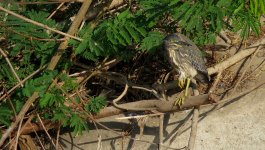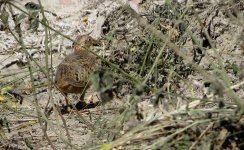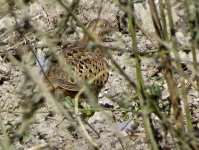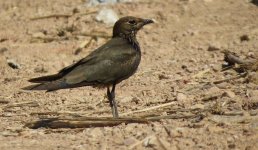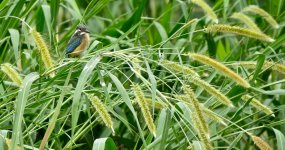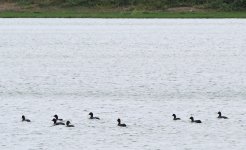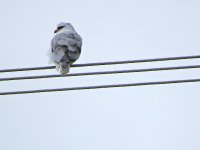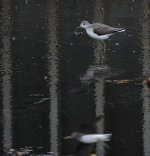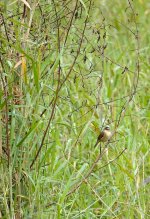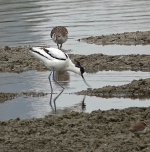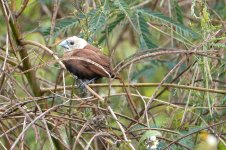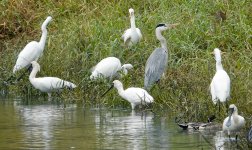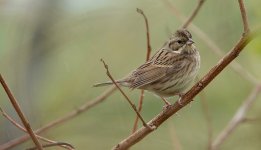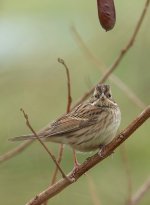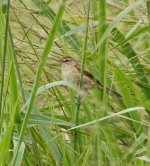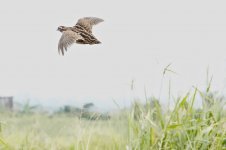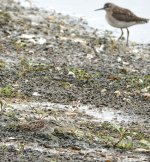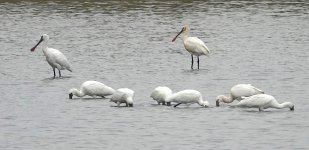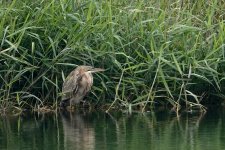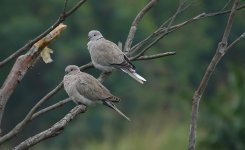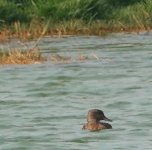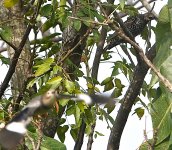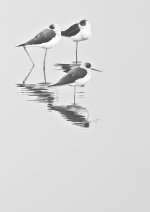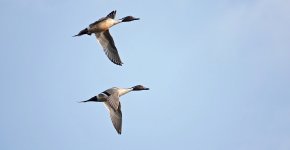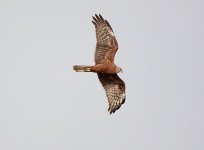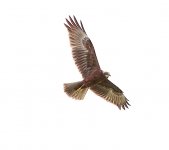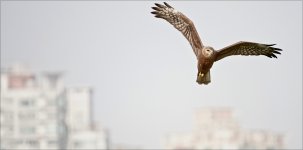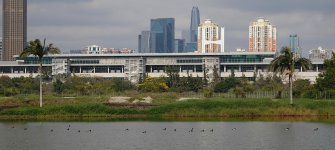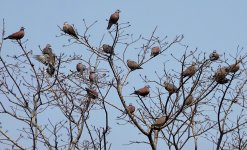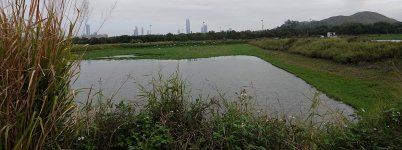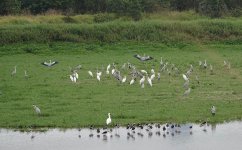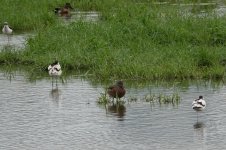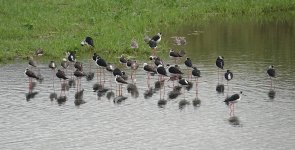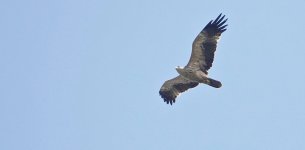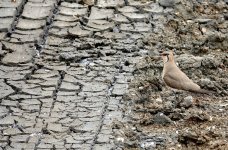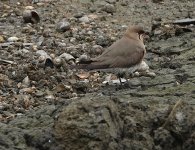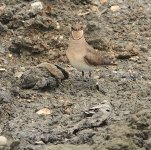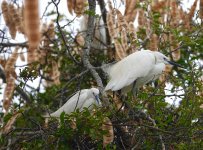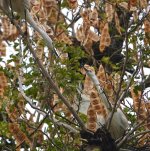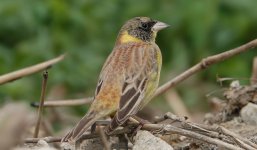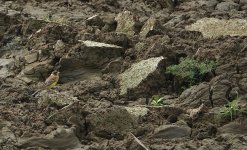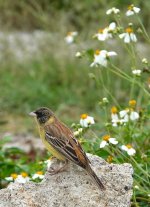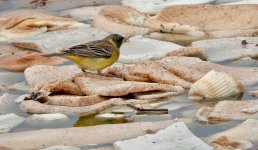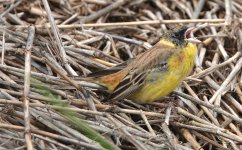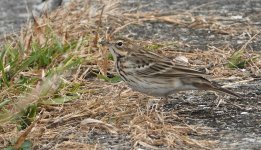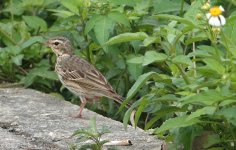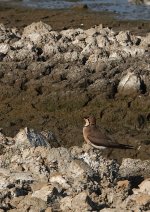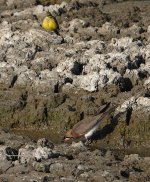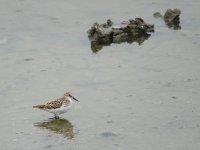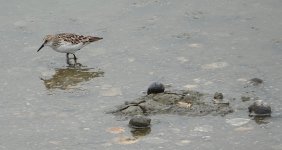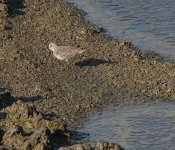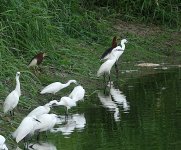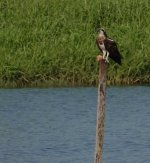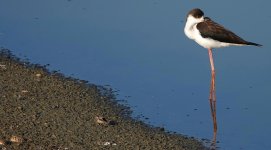MKinHK
Mike Kilburn

After missing my weekend birding due to being wiped out playing a hockey match on Friday evening I decided that the season was too good to miss out on and took this morning to head up to San Tin. Once again I started along the Main Drainage Channel and immediately started hearing buntings - always a good sign.
Scanning from the arc bridge I was pleased to find a little flock of three Black-faced and two Little Buntings, heard the first of four Taiga Flycatchers and had a Grey Wagtail drop into the channel. A little further long the road a noisy and very showy female Daurian Redstart was my first of the winter, while both the grassy banks of the channel and the trees across the road held numerous Dusky Warblers and a couple of Yellow-browed Warblers, and I was pleased to add a male Yellow-breasted Buntings, four more Black-faced Buntings and two more Little Buntings. I was pleased to pick up an Osprey crossing the northern end of the channel and to witness the arrival of a group of seven Black-faced Spoonbills. A flyover Eurasian Starling was a nice, if brief, surprise
Squeezing under the gate I started hearing Black-browed Reed Warblers and buntings around the grassy camera-killing pond , where I also picked up an adult Purple Heron, a very confiding Little Bunting and my first Black-headed Gulls (four) of the winter. Heading on I was delighted to find a rather late Yellow Bittern, two Pheasant-tailed Jacanas and six Coots in the grassy verge of the long pond along with four or five Cattle Egrets and a solitary Intermediate Egret. Two more female Yellow-breasted Buntings and a couple of Richard's Pipits kept the scoreboard ticking, as did the two Greater Spotted Eagles, the regular Black-winged Kite and a female Eastern Marsh Harrier.
Heading up to the northeast corner I flushed my only Chestnut-eared Bunting of the day, had decent views of a calling Taiga Flycatcher and a spanking male Daurian Redstart, plus a couple of Tufted Ducks on the ponds just over the fence to the north, were overflown by a Black-winged Cuckooshrike. Both Red and Oriental Turtle Doves were in their usual tree, but the highlight in this corner - and best birds of the day were the pair of Northern Lapwings hunkered down on a dry bund with just their short winter crests and heads in view. These were the same ponds that first hosted the Greenshanks last weekend, and again there were eight birds, plus a Wood Sandpiper. Looking up an adult Imperial Eagle, its pale straw-coloured head distinctive even a kilometre away, soared in company of three or four Black Kites.
A Japanese Quail - my first for three years - flushed off exactly the same patch as the Black-headed Bunting a couple of weeks earlier, but with the exception of two Red-throated Pipits another couple of Little Buntings and a Black-faced Bunting it was rather quiet in this corner except for another four Coot - making ten on the day in what is a pretty good year in recent times - with 20 reported from Fung Lok Wai yesterday. Sadly the key word in the last sentence was recent. Coot used to be recorded in the low thousands as a winter visitor and breeding was proven three times in the 1970s, but their numbers fell off a cliff and they are now rarely seen in flocks of double figures.
There was a mixed flock of 60-odd Pintail, Shovelever, Wigeon and Teal, many of which were in scruffy eclipse plumage, but brought a sense of winter's arrival, as did another arriving flock of seven Black-faced Spoonbills. The smaller ponds nearby held a variety of waders including a single Spotted Redshank and dozen Temminck's Stints. The final birds on the way out were a soaring Crested Goshawk and a couple of White-breasted Waterhens lurking suspiciously under a collapsing stilt house made a decent total of 90 species for the morning.
Cheers
Mike
Scanning from the arc bridge I was pleased to find a little flock of three Black-faced and two Little Buntings, heard the first of four Taiga Flycatchers and had a Grey Wagtail drop into the channel. A little further long the road a noisy and very showy female Daurian Redstart was my first of the winter, while both the grassy banks of the channel and the trees across the road held numerous Dusky Warblers and a couple of Yellow-browed Warblers, and I was pleased to add a male Yellow-breasted Buntings, four more Black-faced Buntings and two more Little Buntings. I was pleased to pick up an Osprey crossing the northern end of the channel and to witness the arrival of a group of seven Black-faced Spoonbills. A flyover Eurasian Starling was a nice, if brief, surprise
Squeezing under the gate I started hearing Black-browed Reed Warblers and buntings around the grassy camera-killing pond , where I also picked up an adult Purple Heron, a very confiding Little Bunting and my first Black-headed Gulls (four) of the winter. Heading on I was delighted to find a rather late Yellow Bittern, two Pheasant-tailed Jacanas and six Coots in the grassy verge of the long pond along with four or five Cattle Egrets and a solitary Intermediate Egret. Two more female Yellow-breasted Buntings and a couple of Richard's Pipits kept the scoreboard ticking, as did the two Greater Spotted Eagles, the regular Black-winged Kite and a female Eastern Marsh Harrier.
Heading up to the northeast corner I flushed my only Chestnut-eared Bunting of the day, had decent views of a calling Taiga Flycatcher and a spanking male Daurian Redstart, plus a couple of Tufted Ducks on the ponds just over the fence to the north, were overflown by a Black-winged Cuckooshrike. Both Red and Oriental Turtle Doves were in their usual tree, but the highlight in this corner - and best birds of the day were the pair of Northern Lapwings hunkered down on a dry bund with just their short winter crests and heads in view. These were the same ponds that first hosted the Greenshanks last weekend, and again there were eight birds, plus a Wood Sandpiper. Looking up an adult Imperial Eagle, its pale straw-coloured head distinctive even a kilometre away, soared in company of three or four Black Kites.
A Japanese Quail - my first for three years - flushed off exactly the same patch as the Black-headed Bunting a couple of weeks earlier, but with the exception of two Red-throated Pipits another couple of Little Buntings and a Black-faced Bunting it was rather quiet in this corner except for another four Coot - making ten on the day in what is a pretty good year in recent times - with 20 reported from Fung Lok Wai yesterday. Sadly the key word in the last sentence was recent. Coot used to be recorded in the low thousands as a winter visitor and breeding was proven three times in the 1970s, but their numbers fell off a cliff and they are now rarely seen in flocks of double figures.
There was a mixed flock of 60-odd Pintail, Shovelever, Wigeon and Teal, many of which were in scruffy eclipse plumage, but brought a sense of winter's arrival, as did another arriving flock of seven Black-faced Spoonbills. The smaller ponds nearby held a variety of waders including a single Spotted Redshank and dozen Temminck's Stints. The final birds on the way out were a soaring Crested Goshawk and a couple of White-breasted Waterhens lurking suspiciously under a collapsing stilt house made a decent total of 90 species for the morning.
Cheers
Mike




